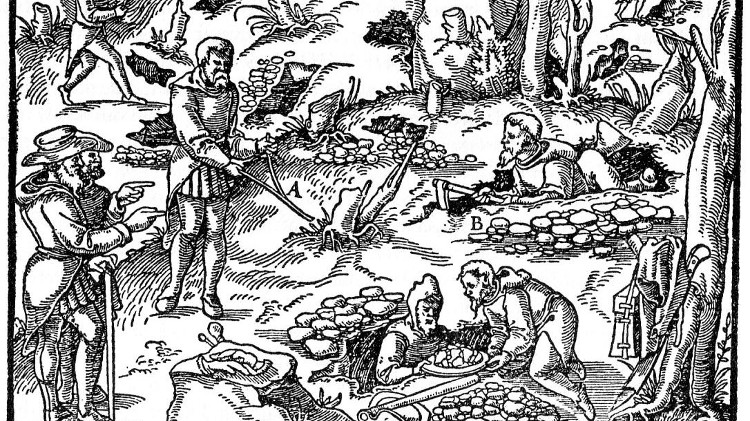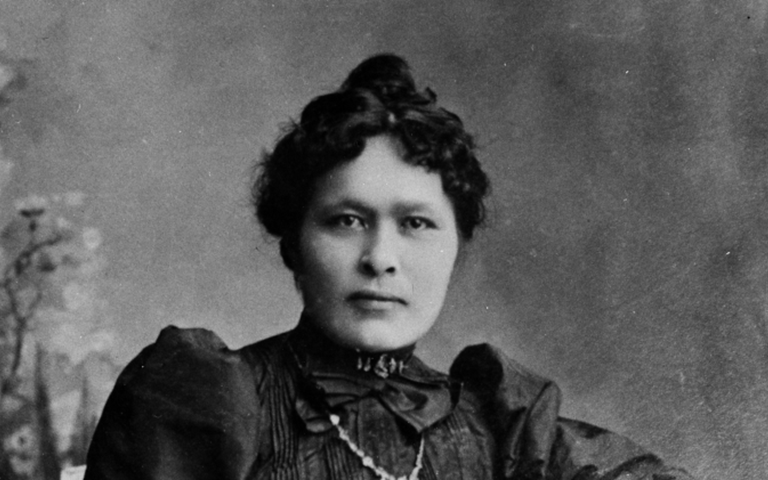Nearly 100 years after her death, Shaaw Tláa has come to be recognized for her instrumental role in the discovery that led to the Klondike Gold Rush. Courtesy of the Canadian Mining Hall of Fame
Shaaw Tláa – also known as Kate Carmack – was an often overlooked but essential part of the prospecting group that kicked off the historic Klondike Gold Rush. Carmack was the rumoured discoverer of the first nugget of Yukon gold and became, for a time, the wealthiest Indigenous woman in America, but was nearly forgotten by the industry she had a central role in launching.
Carmack was nominated to the Canadian Mining Hall of Fame (CMHF) in October, almost two decades after the four male members of her prospecting party that made the discovery were recognized. The induction, which places her on equal footing with the other four and acknowledges her as “instrumental” to the expedition’s success, comes as researchers aim to correct a trend of underrepresentation of the contributions of Indigenous women to Canada’s mining history.
In Deb Vanasse’s 2016 book, Wealth Woman: Kate Carmack and the Klondike Race for Gold, Carmack is described as an “exceptional and complex woman” who has come to represent the spirit of the historically excluded yet essential Indigenous women in Canada’s unruly West.
Shaaw Tláa, a member of the Tagish First Nation, was born in 1862. In the 1880s, after the man she had married and their child died from influenza, she and two family members – her brother Skookum Jim, and nephew Dawson Charlie – joined forces with white prospector George Carmack, and formed a group that packed, hunted and prospected together around the Forty Mile region of Yukon. Shaaw Tláa and George Carmack were married within the first year, and she changed her name to Kate.
In 1896, the group followed a suggestion by fellow prospector Robert Henderson and explored Bonanza Creek, off the Klondike River. That August they struck gold, and lots of it.
They staked the claim in George’s name, apparently believing it would be more likely to be recognized under the name of the group’s only white member, though it is unknown who actually discovered the first gold nugget. Some say it was Skookum Jim, some claim it was George. According to Yukon legend, it may have been Kate herself who, while she was washing dishes in a stream, first noticed the mineral gleam that would send the Northwest into a frenzy.
Related: Female prospectors in the California, Klondike, and Nevada mining booms fought sexism and claim thieving to be taken seriously
The prospectors, who would shortly be joined by scores of other gold-seekers, set up shop immediately. And yet, while they knew they were bringing in wealth beyond their wildest dreams, the gold was not easy to immediately convert into money, food or supplies. It was there that Kate’s contributions proved invaluable. She baked bread and sewed mittens and moccasins to sell to other miners – bringing in immediate income – and used her traditional knowledge to help the group live off the land and survive what could have been a deadly first winter.
After a few years, the family collected close to a million dollars in gold from their claims, launching them into a life of luxury.
Now wealthy, George and Kate Carmack travelled to Seattle, with plans to buy a yacht and sail to Paris. However, things quickly deteriorated. There were stories of the Carmacks leading an early 20th century version of a rock-star lifestyle in the United States, including reportedly flinging gold coins from the roof of a hotel as a crowd scrambled below to collect as much as they could. Kate struggled to adjust, and turned to alcohol.
The couple’s marriage fell apart, and George eventually left Kate for a prostitute, prompting Kate to return home. She filed for divorce and for her share of the wealth the pair had made together. However, because she lacked marriage papers, the court failed to recognize the Carmacks’ union, denying Kate both the divorce and the share of the riches that would come with it. To add insult to injury, George took their daughter with him to the United States.
In 1920, Kate died during a flu epidemic while living quietly in a cabin in Yukon.
In 1988, George Carmack, Skookum Jim, Dawson Charlie and Robert Henderson were recognized by the Prospectors’ Hall of Fame for the discovery that started the largest and most famous gold rush in Canadian history, and ultimately brought more than 100,000 prospectors to the area. The CMHF followed suit in 1999. Kate, meanwhile, has finally received the recognition she deserved, as this year she became the third woman to be inducted to the CMHF.




